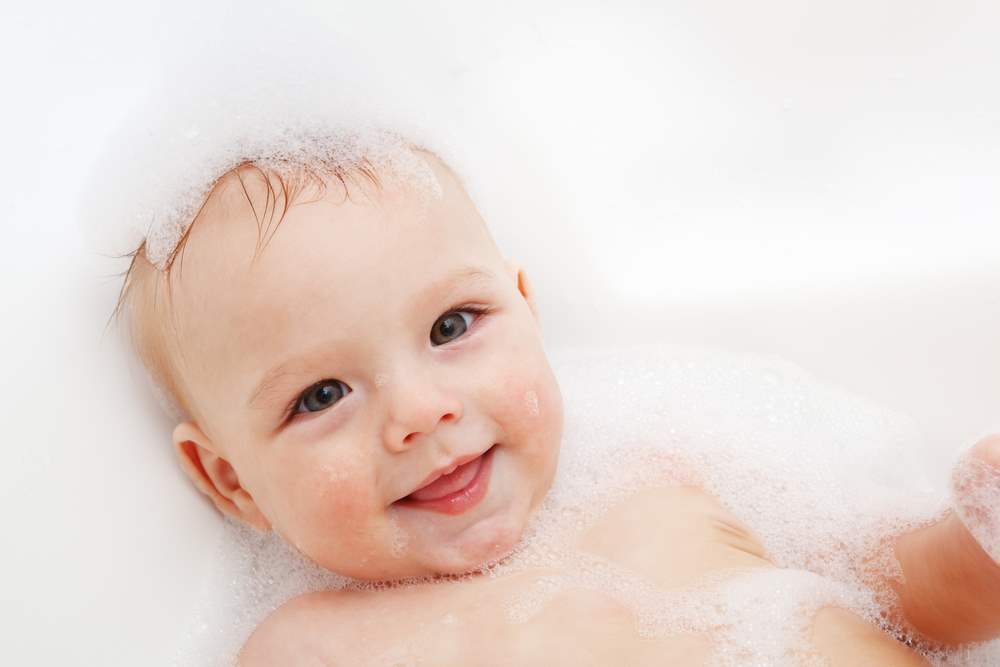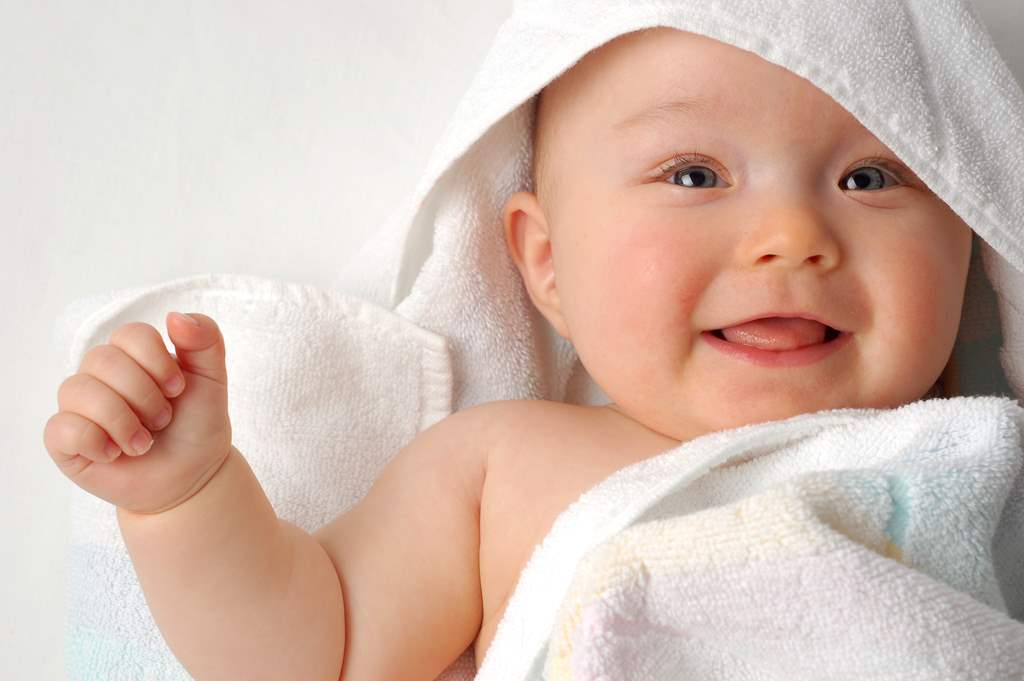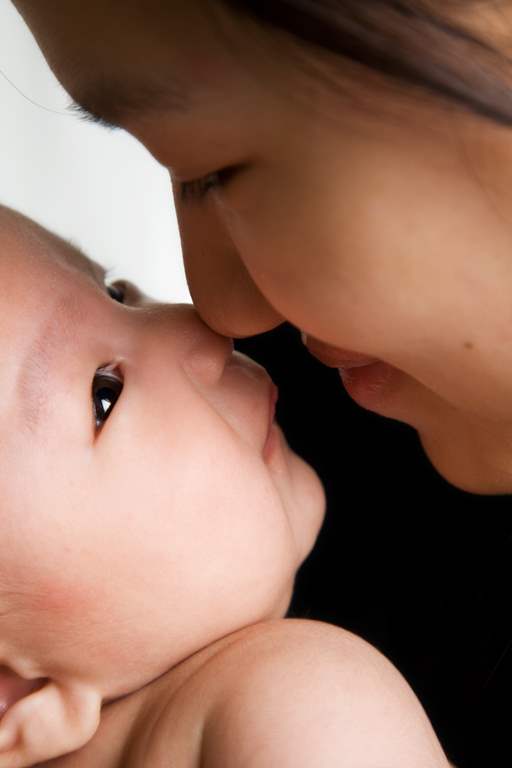How to Bathe Your New Baby

Babies in the bathtub! It’s almost impossible not to smile when scrolling through pics of adorable babies, covered in bubbles, or just splashing in the bath. If you’re a first-time parent, you may be wondering, “Ok, so how exactly do I do this?” when it’s time for your newborn’s first bath. Here are some tips to help you through the process!
Timing
The first question to consider is when your new baby will need his or her first bath. The World Health Organization recommends a 24-hour delay, but other than that, there is actually no hard and fast rule regarding when to give your baby their first sponge bath. Dr. Leung assures new parents that waiting a few days is fine. Any blood residue from delivery can easily be wiped off and a normal wipe-down during diaper changes will suffice. You won’t want to fully immerse the baby in water until the umbilical cord falls off. If your new baby is a circumcised baby boy, stick with sponge baths until their penis has healed.
Because newborns are very sensitive to cold, waiting can help avoid cold-induced stress on your little one. Cold can cause the baby’s body to have to work harder to stay warm, which can in turn cause blood sugar levels to drop. Also, delaying the first bath helps preserve the protection of the vernix a bit longer. The vernix is a wavy, cheese-like coating on a newborn’s skin. The vernix helps retain heat and also provides an added barrier to infections.
How often should you bathe your new baby? Obviously, newborns don’t get overly dirty. Some parents prefer to bathe their baby regularly as part of their bedtime routine. This can help soothe fussy babies and support the beginning of a regular sleep schedule. Because the diaper area gets cleaned with every diaper change, other parents choose to simply wipe down the baby’s skin rolls and crevices regularly in place of a water bath.
Sponge Baths
Decide where you will give your newborn their bath. Baby bathtubs can be conveniently placed in the sink or set inside your regular bathtub. The most important thing is that the location allows you to comfortably kneel or stand while keeping a hand on the baby at all times. Put all of your bathing supplies within arm’s reach:
- Baby soap
- Baby shampoo
- Soft washcloths
- Cup for rinsing
- Bathtub spout cover
- Bath toys
- Soft hooded baby towels
After removing the baby’s clothing and diaper, you can place your child in the baby bathtub. Keeping the baby covered with a towel, you can lift it and clean small areas at a time using a washcloth dipped in warm water. Pay special attention to any creases and rolls and pat the baby dry as you go.
Water Baths
After the umbilical cord stump has fallen off, your baby can have a regular bath. A slippery, wet baby can be tricky to manage and it is hugely helpful to have a spouse, partner, friend, or family member with you to assist! As with sponge baths, you’ll want to decide where you’ll bathe the baby and gather your supplies.
Start by filling your bathtub with 2 to 3 inches of warm water. The bath temperature for a newborn should be between 90 to 100 degrees Fahrenheit, never hotter than 120 degrees. Parents are understandably concerned about the water being too hot, it’s important to keep in mind that babies get cold very easily, so be careful not to err on the side of having the water be too cool. It’s fine to check with a thermometer if you are worried about getting the temperature in the right range.
While carefully supporting your baby’s head, you will gently lower your child into the water. It sounds odd, but it is important to keep your baby covered during the bath. You may also want to adjust your air conditioning to make the house a little warmer. Despite being in a warm bath, a baby can lose body heat quickly.
With a soft washcloth, gently wipe your baby’s body down, including the head and face. Be sure to wipe in the creases behind the ears, around the neck, the underarm areas, and the genital area. Baby shampoo and soap smells wonderful, but it is optional; warm water and a soft washcloth are able to clean your little one. However, if you do choose to use baby shampoo, be sure to cup your hand across your little one’s forehead when rinsing so no suds go into the eyes!

Making sure you have a secure hold, gently lift your baby out of the bath and wrap them in a hooded towel. Your newborn’s skin may occasionally appear dry, but baby oil or baby lotion isn’t necessary. The natural oils in a baby’s skin will generally maintain the softness and suppleness, but unscented baby lotion can be used if desired. If you’re seeing widespread dry skin, it may be because you are bathing the baby too often. Pass on the baby powder, as babies can inhale the particles, causing respiratory problems.
Most babies will fuss or cry during their first bath, as the sensations are unfamiliar! However, before long, your baby will get used to the experience, and you’ll be treated to the smiles and splashes you’ve been imagining! Enjoy this special time with your little one. If you have any questions or concerns, please call our office at 469-425-3600.

